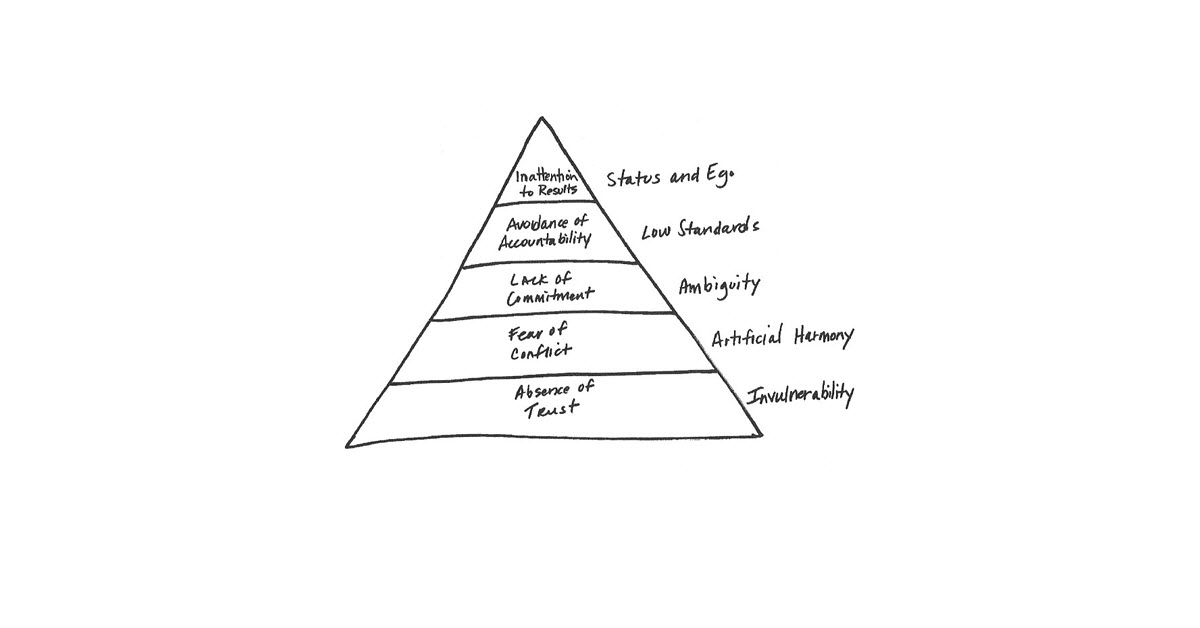Written by CWA Partner Toni Lee
A book for even the casual reader
While I may not qualify as an avid reader, I do enjoy a book that is clear, precise and gets to the point quickly. I have a library of books in my office. Some read cover to cover, others read only in parts, as they failed to capture my attention quick enough to make it past the introduction.
Years ago, patiently waiting for an airline flight, I spotted this book in the airport newsstand, The Five Dysfunctions of a Team. Although skeptical, as most business management books are filled with acronym after acronym- I was in for quite a surprise. This book was easy-to-read, simple plain English. Author Patrick Lencioni uniquely presents his message through a fable, one that commanded my attention through a storyline based on real characters. I read the book, cover to cover, during my short flight home to Texas.
The teams we build on and off the court
We all work in many different types of teams as part of our everyday lives. Whether we are a member of a team in the workplace, when volunteering, at school, home or in sports- the concept of a team relates back to effective communication between its members. An individual does not win, a team wins. In all aspects of life, we cannot win alone. The people and interactions around us allow us to be a winner.
Reduce misunderstanding to avoid dysfunction
Lencioni introduces us to the five dysfunctions: 1. Absence of trust, 2. Fear of conflict, 3. Lack of commitment, 4. Avoidance of accountability and 5. Inattention to results. He teaches that the first step towards reducing misunderstanding and confusion within a team is to understand each dysfunction. Next one must understand how important it is that each applicable dysfunction must be addressed separately.
Let’s look at an example of conflict. If you dread attending meetings, then you may be working with a dysfunctional team. A meeting, like a movie, typically ranges from 90 to 120 minutes in length. What does a movie have that many meetings do not? Conflict. Conflict is not a bad thing, and should not be feared. Healthy conflict is constructive. Constructive conflict, or debate, allows each team member to be heard. Allowing each person to speak, and to respectfully be listened to and heard, allows the group to come to a decision or commitment on a matter. If there is no topic worth debating, there is no need for a meeting. To develop your team, you must develop trust so that you can progress through conflict. Once each team member has spoken and been heard, the team can be committed. With commitment and trust, the team can hold each other accountable to reach their intended results.
Find your winning team
Ever since the first time I read The Five Dysfunctions of a Team, and every time thereafter, I have been recommending it to my clients. I now recommend it to you. The concepts are easy. You too have the ability to develop a successful functional team! In conclusion, I leave you with a quote from Patrick Lencioni:
“Successful teamwork is not about mastering subtle, sophisticated theories, but rather about combining common sense with uncommon levels of discipline and persistence. Ironically, teams succeed because they are exceedingly human. By acknowledging the imperfections of their humanity, members of functional teams overcome the natural tendencies that make teamwork so elusive.”
Say “yes” to next month’s book
How is it that some people just seem to have the power to influence and make us say ‘yes’ in any situation? In next month’s review, Hunter Satterfield will review Dr. Robert Cialdini’s classic book, Influence: The Psychology of Persuasion. In this book Cialdini, a doctor of psychology and seminal expert in the fields of influence and persuasion, teaches six principals on the subject, and how we can use them to both become a skilled persuader – and defend ourselves against them.














